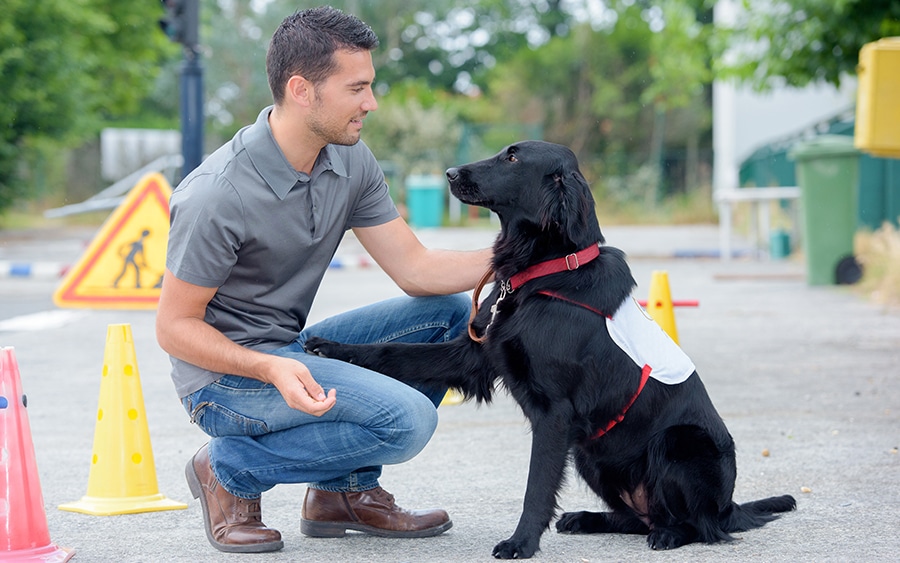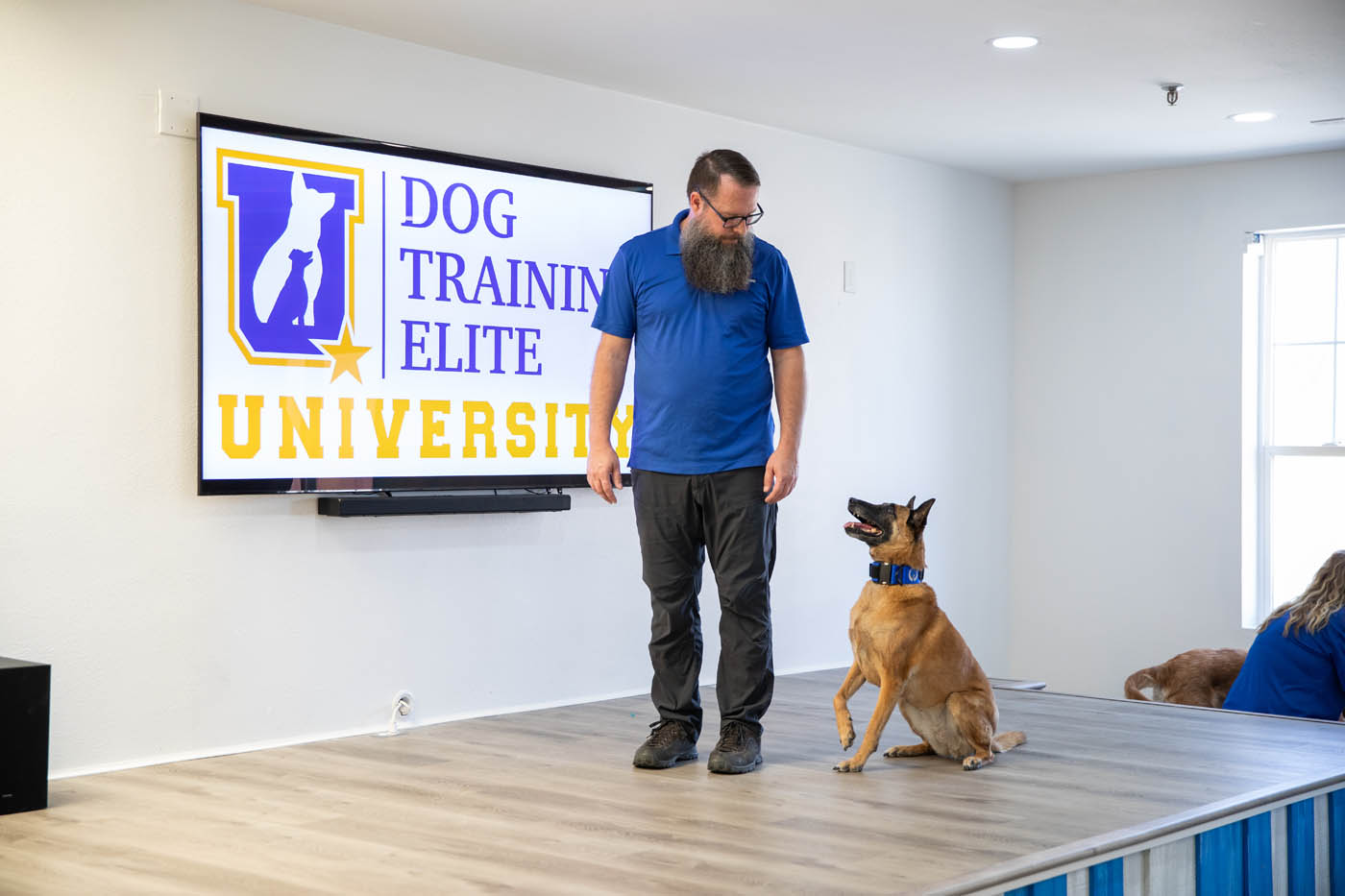Dog Training Charlotte NC: Your Path to a Well-Behaved Dog
Dog Training Charlotte NC: Your Path to a Well-Behaved Dog
Blog Article
Unlock Your Pet dog's Possible: Proven Pet Training Approaches for Success
Efficient pet dog training is a nuanced process that hinges on understanding canine habits and using medically backed methods. By incorporating positive reinforcement, developing clear commands, and prioritizing socializing, pet owners can grow a productive partnership with their animals.
Comprehending Canine Habits
Understanding dog behavior is vital for reliable training and fostering a positive connection in between canines and their proprietors. A thorough understanding of canine body language, vocalizations, and social interactions is critical for identifying their feelings and demands. Canines interact primarily through non-verbal cues; for instance, a wagging tail might indicate excitement, while pinned ears can indicate concern or submission.

Furthermore, environmental aspects play a considerable duty in shaping a pet dog's actions. Adjustments in regular, new surroundings, or the visibility of strange people can cause stress and anxiety or anxiousness in dogs. Recognizing these triggers enables proprietors to alleviate unfavorable reactions and develop ideal training approaches.
Eventually, a deep understanding of pet actions lays the foundation for successful training approaches, enhancing both behavior and the total bond in between the canine and its proprietor. dog training near me. This knowledge is essential for promoting a well-adjusted, pleased canine buddy
Favorable Reinforcement Techniques
Reliable training depends greatly on favorable reinforcement methods, which have been revealed to yield substantial results in forming preferred habits in canines. This method involves compensating a pet dog for showing certain behaviors, consequently increasing the likelihood that these actions will be duplicated. Rewards can take different kinds, including deals with, appreciation, toys, or playtime, depending on what encourages the private canine.

It is important to slowly terminate rewards as the dog finds out the behavior, transitioning to intermittent support. This strategy keeps the actions with time while preventing dependency on consistent benefits. By focusing on positive reinforcement, instructors can grow a trusting relationship with their dogs, promoting a cooperative and healthy training setting that boosts total obedience and efficiency.
Establishing Constant Commands
An essential aspect of effective pet training is the facility of constant commands. Consistency in commands is vital for effective interaction between the canine and the fitness instructor. When commands are uniform, dogs find out to link specific words with wanted actions, which speeds up the training process and boosts understanding.
To establish consistent commands, it is essential that all household participants make use of the exact same terminology and gestures. If one person utilizes "rest" while one more claims "rest down," it can create complication for the canine. Select clear, unique words for commands and guarantee everyone entailed in the dog's training adheres to these options.
Furthermore, repeating is vital. Enhance commands with constant practice, ensuring that the pet dog receives adequate opportunities to respond appropriately. When a dog effectively follows a command, click for source immediate favorable support should comply with. This could be in the form of deals with, appreciation, or play, next strengthening the link between the command and the activity.
Finally, hold your horses. Developing consistent commands takes time and effort. With commitment and clarity, you will assist your pet dog establish a strong understanding of expectations, ultimately causing a well-behaved companion.
Socializing and Direct Exposure
Interacting socially a canine is vital for fostering a well-adjusted and positive buddy. This process entails subjecting your pet dog to a variety of settings, individuals, and other pets to develop their social skills and flexibility. Early socializing, preferably in between the ages of 3 to fourteen weeks, is critical, as it prepares for a dog's future actions.
Throughout socializing, purpose to give favorable experiences in various setups, such as parks, hectic streets, and homes with other pets. Introduce your canine to numerous stimulations, consisting of noises, views, and smells, guaranteeing that each encounter is gratifying. This exposure aids minimize fear and anxiety, leading the way for a more resistant pet dog.
Involving in regulated group play sessions with other pets can additionally enhance social abilities, showing your pet suitable interactions and limits. Prioritizing socialization will substantially add to your pet's total joy and actions throughout their life.
Overcoming Common Training Challenges

Pets may have a hard time to concentrate in active or unfamiliar setups. Progressively desensitize your canine to diversions by beginning training in a quiet atmosphere and gradually presenting even more stimuli as they become skilled.
In addition, behavior concerns like jumping or excessive barking can become aggravating. Address these by showing different actions, such as resting calmly when welcoming visitors. Uniformity and perseverance are crucial; reinforce desired behaviors regularly and avoid scolding, which can result in their website confusion.
Lastly, recognize that each canine is distinct, and training timelines may vary. Tailor your strategy to your dog's specific demands, and look for expert support if needed. With determination and the ideal methods, getting rid of these difficulties can result in a well-trained, happy canine friend.
Verdict
To conclude, unlocking a dog's possible demands a detailed technique that integrates an understanding of canine behavior, the application of favorable support techniques, and the facility of constant commands. Early socialization and direct exposure to varied atmospheres further boost a pet dog's adaptability and confidence. By attending to typical training difficulties with customized techniques and patience, a participating and harmonious connection in between pet dog and handler can be cultivated, eventually resulting in a mannerly companion with the ability of flourishing in numerous circumstances.
Reliable pet dog training is a nuanced process that pivots on understanding canine behavior and employing medically backed methods.Understanding pet behavior is crucial for efficient training and cultivating a positive connection in between canines and their proprietors.Effective training depends greatly on positive reinforcement strategies, which have been shown to generate significant results in forming wanted behaviors in pet dogs. When commands are consistent, canines discover to associate particular words with wanted behaviors, which speeds up the training procedure and boosts understanding.
In conclusion, unlocking a pet dog's possible necessitates an extensive technique that includes an understanding of canine behavior, the application of positive reinforcement techniques, and the establishment of constant commands.
Report this page